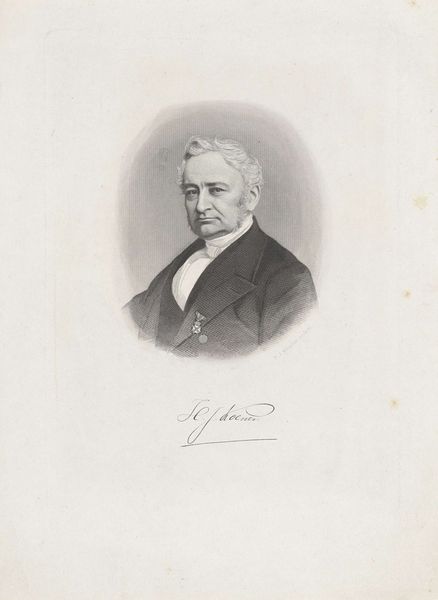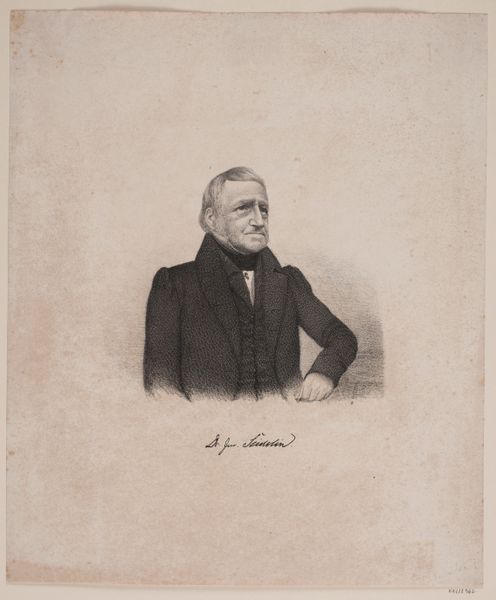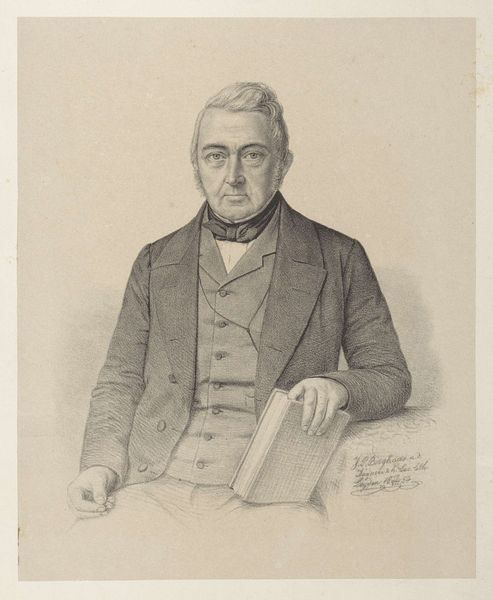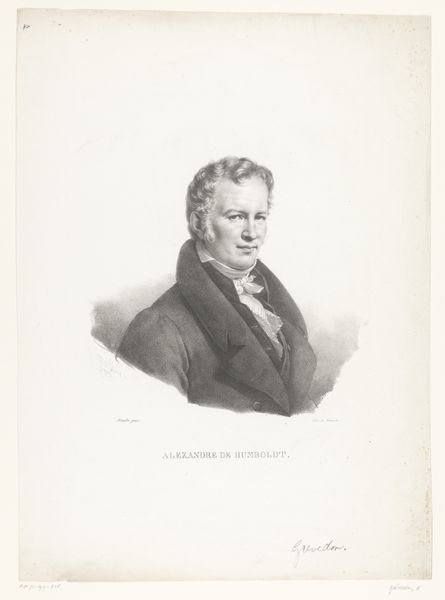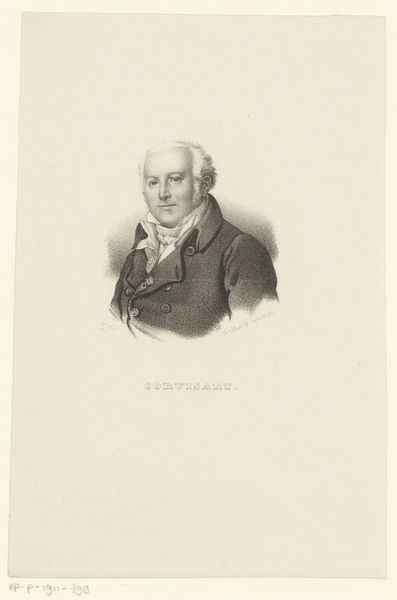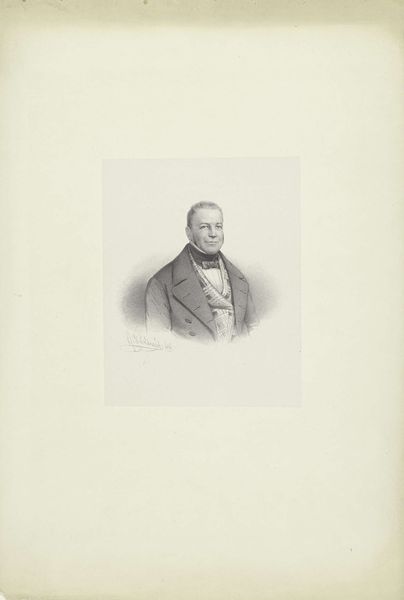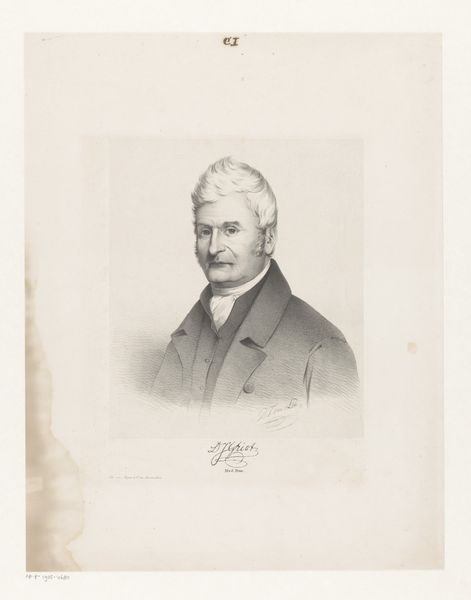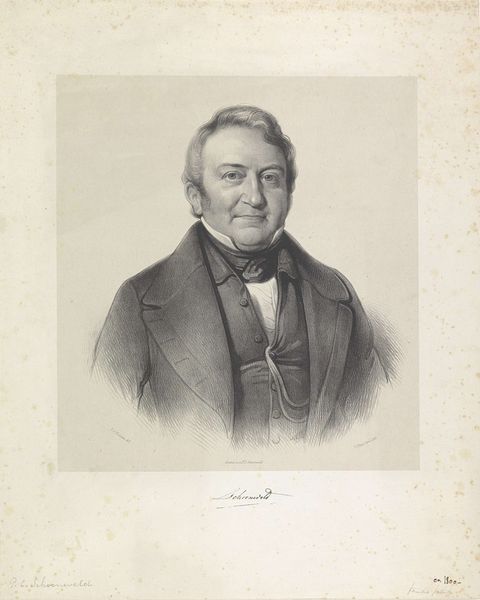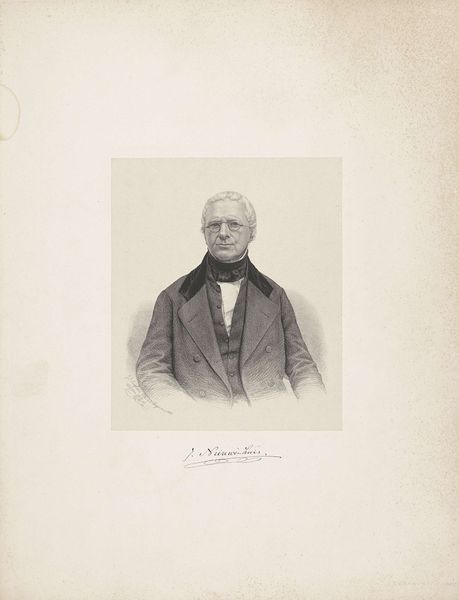
Portret van Willem Boudewijn Donker Curtius van Tienhoven 1848
0:00
0:00
gerhardusfredericuseilbracht
Rijksmuseum
drawing, graphite
#
portrait
#
drawing
#
pencil drawing
#
romanticism
#
graphite
#
portrait drawing
#
academic-art
#
graphite
#
realism
Dimensions: height 445 mm, width 300 mm
Copyright: Rijks Museum: Open Domain
This is a portrait of Willem Boudewijn Donker Curtius van Tienhoven made by Gerhardus Fredericus Eilbracht, though the exact date is unknown. It is made using lithography, a printmaking process that relies on the chemical repulsion between oil and water. The image begins with a smooth slab of limestone, on which the artist draws the portrait using a greasy crayon. The stone is then treated with acid, etching the drawing into its surface. Ink, which is also greasy, adheres only to the drawn areas. The image is then transferred onto paper using a printing press. Notice how this indirect process yields a distinctive aesthetic. The subtle tonal gradations, achieved through careful manipulation of the crayon, give the portrait a soft, almost ethereal quality. Lithography, unlike engraving, allowed for a more direct translation of the artist's hand, opening up new possibilities for capturing likeness and nuance. By valuing the skilled labor involved in lithography, we can appreciate how the medium itself shapes the meaning of the artwork, blurring the lines between art, craft, and industrial production.
Comments
No comments
Be the first to comment and join the conversation on the ultimate creative platform.



